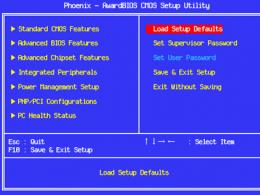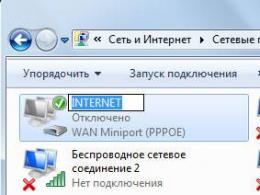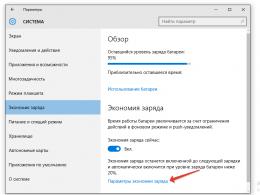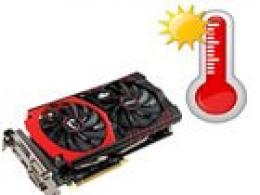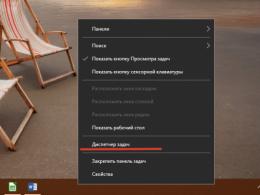Xperia e5 white. Sony Xperia E5 - an inexpensive but worthy device from Japan
Japanese Sony company In recent years, it has not been famous for its affordable devices. Things aren't going well for the corporation's mobile division, so to keep it afloat, the Japanese put a hefty markup on their phones. However, this is not Apple, and compared to its brethren in 2016 Sony Xperia The E5 F3311, released in May, looks affordable. Its price starts from 190 US dollars.
The device has very budget-friendly characteristics, as at first glance, but it also has positive aspects. How does a smartphone differ from its twice cheaper Chinese counterparts, are there any clear advantages over them, and is it worth buying? Will help determine the review.
The characteristics of the Xperia E5 F3311 are not surprising. A Chinese chipset, a standard screen - all this is also available in “nonames” for 80-100 dollars. At first glance, the smartphone does not live up to its inflated price tag.
Design, case materials, dimensions and weight
External Xperia view E5 F3311 can be added to the list of advantages. Although it does not have metal body parts, it looks good. Externally, the smartphone is somewhat reminiscent of the flagship Z5 series, and the name echoes it. The dimensions of the smartphone are 14.4x6.9 cm, thickness is 8.2 mm, and the device weighs 147 grams. Typical indicators for a five-inch device, if not for one “but”: there are no buttons under the screen. Taking this fact into account, the “chin” looks unreasonably wide.
The design of the rear panel (non-removable) is laconic. It is flat, slightly rounded at the edges, and in the middle there is a not very noticeable manufacturer’s logo. Material – plastic, gray or white. In the very corner there is a camera with a single diode flash (like an iPhone).
There is nothing on the front panel below (standard 3 control buttons are on the display). At the top there is a speaker slot, a camera and a window for light and proximity sensors. The frames around the screen are wide (3-4 millimeters).
The side ribs are designed non-standardly, as for Sony, but typical for other brands. On the right is the power/lock button, above it is the sound control rocker. At the top left is a slot for MicroSD and NanoSIM cards. At the top end there is a 3.5 mm headset jack and a second microphone. On the bottom there is a speaker and a MicroUSB port.




CPU
Sony has previously practiced installing chipsets from Taiwan, so the presence of a MediaTek processor is not surprising. It’s a little disappointing that this is a quad-core MT6735 with a frequency of 1.3 GHz. It is a cheaper competitor to the American Snapdragon 410, and the Chinese even put it in handsets for 80 USD. The processor is not a slowdown at all - it renders the interface smoothly, and even copes well with more complex tasks, but compared to more advanced models it looks modest.
The Mali T720 graphics processor is responsible for 3D processing. It is quite capable of handling modern toys, but high graphics settings can only be a dream. The smartphone is clearly not made for gamers. In AnTuTu 6, the smartphone scores about 27 thousand points.
Memory
Volume random access memory The Xperia E5 F3311 looks decent for a budget employee. But for 2 hundred “green” 1.5 GB LPDDR3 may not seem enough. But what can you do: the Japanese need to liquidate 512 MB worth of chips from warehouses, and 1.5 GB is better than 1. At the start, the system consumes around 800 MB, 600-700 free. This is enough to ensure normal multitasking, programs do not crash out of the blue.
The built-in storage has a capacity of 16 GB, up to 10 are available to the user. There is a slot for a memory card, it is separate. MicroSD modules up to 256 GB are supported. Unfortunately, there is no USB OTG.
Battery
Sometimes Sony sins by installing small-capacity batteries in the hope that Stamina (proprietary energy saving mode) will save the day. But the Sony Xperia E5 F3311 avoided this problem; its battery has a capacity of 2700 mAh. The only pity is that it is not removable. Because of this, the question arises of how, in case of wear, replacement can be carried out without tearing apart the monolithic plastic body.
The battery life of the smartphone is quite typical and not far from the statistical average. The battery will last up to 5 hours in games, about 7 hours – playing from YouTube, up to 10-11 – watching movies from the memory. In standby mode, you can count on two days, with gentle use. Charger– at 1 A, with it charging lasts up to 3 hours.
Cameras
The main camera of the Xperia E5 F3311 has a 13 MP matrix, supports autofocus, and is equipped with a single flash. The lens aperture is f/2, the matrix size is 1/3", pixels are 1.12 microns. Everything is standard and unremarkable. Taking photos during the day allows you to get acceptable quality, but in the evening there are problems with this. The quality of the images, in general, is at the level some Xiaomi Mi4c, what for this price category acceptable, but not ideal. 



The front camera is 5 MP, with an f/2.4 aperture, you shouldn’t expect a miracle from it. It's great for video conferencing, but you can only take a good selfie during the day. In the evening there is a lot of noise and artifacts, which is affected by a slightly degraded aperture ratio.
Video recording is carried out in 1080p, with 30 FPS. Video recording at low level. Autofocus works every other time. The dynamic range of the video is narrow, there are white spots instead of the sky, and you can’t see anything in the shadows.
Display
TO Sony screens usually there are no complaints (they use high-quality IPS JDI matrices), the Xperia E5 F3311 was no exception. Five-inch IPS screen with a resolution of 1280x720 pixels, it is easy to read in the sun and at an angle, the brightness is distributed evenly, and the color rendition is natural. Some may find the HD resolution low, but at 5" a pixel density of 293 PPI is quite enough.

The touchscreen is made of tempered glass (the manufacturer does not specify whether it is Gorilla or Asahi) and supports up to 4 touches. Oleophobic coating is available, its quality is quite good (better than that of the Meizu M2 Mini).
Connection
Available for sale in the post-Soviet region Sony version Xperia E5 F3311 for 1 SIM card, this review is dedicated to it. There is also a model for 2 cards, but it is quite difficult to find it on sale. GSM, HSPA and LTE networks are supported, there are no problems with Russian operators.
Also on board are Wi-Fi operating in 2.4 and 5 GHz networks, and Bluetooth 4.1. The navigator supports GPS satellites. I'm glad that there is an NFC module on board, which is not bad for a relatively inexpensive smartphone.
operating system
The Xperia E5 F3311 runs on Android 6.1 OS. There is a branded GUI Sony, but this is just a shell, and not a big mod (like MIUI or FlymeOS for the Chinese). Overall, the system is very close to stock Marshmallow. The OS runs smoothly, without any brakes. For slowdowns in work to appear, you need to either load the memory with programs, or open a page overloaded with various elements.
Sound
The smartphone does not have a dedicated DAC, so you shouldn't expect fantastic quality from the sound. You can listen to music on the speaker, but you shouldn't expect a wide frequency range. In the headphones, the sound is typical of Sony (known as a "music" company). It is slightly better than the Chinese ones for $100-150, but weaker and poorer than models with a separate sound chip. There is an FM radio on board.
Pros and cons of Sony Xperia E5 F3311
- successful design;
- normal battery;
- decent (for the price category) sound;
- good screen.
- understated (for a price of $200) characteristics.
Who is a smartphone suitable for?
The smartphone will appeal to fans of inexpensive Japanese devices, as it is the most affordable recent Sony device. It is designed for those who specifications not very important, the main thing is that everything works stably. The smartphone copes with modern tasks, but such users don’t need anything more from it.
Our review of the Sony Xperia E5 F3311
The review showed that the Sony Xperia E5 F3311 is a good smartphone, although not without its sins. It has a passable camera for its price, a good screen and a good design. The good news is that there is support for memory cards of almost any size (512 GB chips are not being produced yet, but they should also work). The only thing that upset me was the fact that the price is a little steep. Still, almost $200 is a bit too much for a device with a cheap Chinese processor and only 1.5 GB of RAM.
Used for 3 days. I was choosing between xperia XA and E5. The only choice was Sony, to replace the old xperia SP. There is not much difference between the XA and E5, only the processor. In general, I am very pleased with the purchase. Performance is excellent, it works quickly, the screen responds clearly. They really joked about the SONY battery; it could have been more powerful for such a model. I don't know if I took XA with 8 cores. There is the same 2300 battery, but 4 cores, 1.3 percent. In general, the battery lasts for a day or more with average use. In the morning with a full charge, in the evening 35-40 percent. Both calls and internet. In general, like all recent Sony devices, the battery is weak, but tolerable, especially if you know how to use it. The camera is a huge minus. I even had a camera on SP that was much smarter and clearer. The front is good. As for the Sound, the sound is high-quality, surround. I was shocked when I heard it. Usually the phone starts screaming and everything wheezes, etc. And here the sound is very high quality, but unfortunately quiet. Communication and microphone are excellent. And compared to the early ones SONY models, there are no heaps of unnecessary factory programs. The case does not seem to creak, everything is clear and strong. In general, I am satisfied and confidently recommend it. Definitely worth the money.
Information about the make, model, and alternative names of the specific device, if available.
Design
Information about the dimensions and weight of the device, presented in different units of measurement. Materials used, colors offered, certificates.
| Width Width information - refers to the horizontal side of the device in its standard orientation during use. | 69 mm (millimeters) 6.9 cm (centimeters) 0.23 ft (feet) 2.72 in (inches) |
| Height Height information - refers to the vertical side of the device in its standard orientation during use. | 144 mm (millimeters) 14.4 cm (centimeters) 0.47 ft (feet) 5.67 in (inches) |
| Thickness Information about the thickness of the device in different units measurements. | 8.2 mm (millimeters) 0.82 cm (centimeters) 0.03 ft (feet) 0.32 in (inches) |
| Weight Information about the weight of the device in different units of measurement. | 147 g (grams) 0.32 lbs 5.19 oz (ounces) |
| Volume The approximate volume of the device, calculated based on the dimensions provided by the manufacturer. Refers to devices with the shape of a rectangular parallelepiped. | 81.48 cm³ (cubic centimeters) 4.95 in³ (cubic inches) |
| Colors Information about the colors in which this device is offered for sale. | Black White |
| Materials for making the case Materials used to make the device body. | Plastic |
SIM card
The SIM card is used in mobile devices to store data that certifies the authenticity of mobile service subscribers.
Mobile networks
A mobile network is a radio system that allows multiple mobile devices to communicate with each other.
| GSM GSM (Global System for Mobile Communications) is designed to replace the analogue mobile network (1G). For this reason, GSM is often called a 2G mobile network. It is improved by the addition of GPRS (General Packet Radio Services), and later EDGE (Enhanced Data rates for GSM Evolution) technologies. | GSM 850 MHz GSM 900 MHz GSM 1800 MHz GSM 1900 MHz |
| UMTS UMTS is an abbreviation for Universal Mobile Telecommunications System. It is based on GSM standard and applies to 3G mobile networks. Developed by 3GPP and its biggest advantage is providing greater speed and spectral efficiency thanks to W-CDMA technology. | UMTS 850 MHz UMTS 900 MHz UMTS 1900 MHz UMTS 2100 MHz UMTS 1700/2100 MHz (F3313) |
| LTE LTE (Long Term Evolution) is defined as a technology fourth generation(4G). It is developed by 3GPP based on GSM/EDGE and UMTS/HSPA to increase the capacity and speed of wireless mobile networks. The subsequent technology development is called LTE Advanced. | LTE 850 MHz LTE 1900 MHz LTE 2600 MHz LTE 2100 MHz (F3311) LTE 1800 MHz (F3311) LTE 900 MHz (F3311) LTE 800 MHz (F3311) LTE 1700/2100 MHz (F3313) LTE 700 MHz (B12) (F3313) LTE 700 MHz Class 17 (F3313) LTE 700 MHz (B28) (F3313) |
Mobile communication technologies and data transfer speeds
Communication between devices on mobile networks is carried out using technologies that provide different data transfer rates.
Operating system
An operating system is a system software that manages and coordinates the operation of hardware components in a device.
SoC (System on Chip)
A system on a chip (SoC) includes all the most important hardware components of a mobile device on one chip.
| SoC (System on Chip) A system on a chip (SoC) integrates various hardware components, such as a processor, graphics processor, memory, peripherals, interfaces, etc., as well as the software necessary for their operation. | MediaTek MT6735A |
| Technological process Information about technological process, on which the chip is made. Nanometers measure half the distance between elements in the processor. | 28 nm (nanometers) |
| Processor (CPU) The primary function of a mobile device's processor (CPU) is to interpret and execute instructions contained in software applications. | ARM Cortex-A53 |
| Processor size The size (in bits) of a processor is determined by the size (in bits) of the registers, address buses, and data buses. 64-bit processors have higher performance compared to 32-bit processors, which in turn are more powerful than 16-bit processors. | 64 bit |
| Instruction Set Architecture Instructions are commands with which the software sets/controls the operation of the processor. Information about the instruction set (ISA) that the processor can execute. | ARMv8-A |
| Level 1 cache (L1) Cache memory is used by the processor to reduce access time to more frequently used data and instructions. L1 (level 1) cache is small in size and works much faster as system memory, and other levels of cache memory. If the processor does not find the requested data in L1, it continues to look for it in the L2 cache. On some processors, this search is performed simultaneously in L1 and L2. | 32 kB + 32 kB (kilobytes) |
| Level 2 cache (L2) L2 (level 2) cache memory is slower than L1, but in return it has a higher capacity, allowing caching more data. It, like L1, is much faster than system memory (RAM). If the processor does not find the requested data in L2, it continues to look for it in the L3 cache (if available) or in RAM memory. | 512 kB (kilobytes) 0.5 MB (megabytes) |
| Number of processor cores The processor core executes software instructions. There are processors with one, two or more cores. Having more cores increases performance by allowing multiple instructions to be executed in parallel. | 4 |
| CPU clock speed The clock speed of a processor describes its speed in terms of cycles per second. It is measured in megahertz (MHz) or gigahertz (GHz). | 1300 MHz (megahertz) |
| Graphics Processing Unit (GPU) Graphics processing unit (GPU) handles calculations for various 2D/3D graphic applications. IN mobile devices ah it is used most often by games, consumer interface, video applications, etc. | ARM Mali-T720 MP1 |
| Number of cores GPU Like a CPU, a GPU is made up of several working parts called cores. They handle graphics calculations for various applications. | 1 |
| GPU clock speed Speed of work is clock frequency GPU speed, which is measured in megahertz (MHz) or gigahertz (GHz). | 450 MHz (megahertz) |
| Amount of random access memory (RAM) Random Access Memory (RAM) in use operating system and all installed applications. Data stored in RAM is lost after the device is turned off or restarted. | 1.5 GB (gigabytes) |
| Type of random access memory (RAM) Information about the type of random access memory (RAM) used by the device. | LPDDR3 |
| Number of RAM channels Information about the number of RAM channels that are integrated into the SoC. More channels mean higher data rates. | Single channel |
| RAM frequency The frequency of RAM determines its operating speed, more specifically, the speed of reading/writing data. | 533 MHz (megahertz) |
Built-in memory
Each mobile device has built-in (non-removable) memory with a fixed capacity.
Memory cards
Memory cards are used in mobile devices to increase the storage capacity for storing data.
Screen
The screen of a mobile device is characterized by its technology, resolution, pixel density, diagonal length, color depth, etc.
| Type/technology One of the main characteristics of the screen is the technology by which it is made and on which the quality of the information image directly depends. | IPS |
| Diagonal For mobile devices, screen size is expressed by the length of its diagonal, measured in inches. | 5 in (inches) 127 mm (millimeters) 12.7 cm (centimeters) |
| Width Approximate screen width | 2.45 in (inches) 62.26 mm (millimeters) 6.23 cm (centimeters) |
| Height Approximate screen height | 4.36 in (inches) 110.69 mm (millimeters) 11.07 cm (centimeters) |
| Aspect Ratio The ratio of the dimensions of the long side of the screen to its short side | 1.778:1 16:9 |
| Permission Screen resolution shows the number of pixels vertically and horizontally on the screen. Higher resolution means clearer image detail. | 720 x 1280 pixels |
| Pixel Density Information about the number of pixels per centimeter or inch of the screen. Higher density allows information to be displayed on the screen with clearer detail. | 294 ppi (pixels per inch) 115 ppcm (pixels per centimeter) |
| Color depth Screen color depth reflects the total number of bits used for color components in one pixel. Information about the maximum number of colors that the screen can display. | 24 bit 16777216 flowers |
| Screen area Approximate percentage of screen area occupied by the screen on the front of the device. | 69.59% (percent) |
| Other characteristics Information about other screen features and characteristics. | Capacitive Multi-touch |
Sensors
Different sensors perform different quantitative measurements and convert physical indicators into signals that a mobile device can recognize.
Main camera
The main camera of a mobile device is usually located on the back of the body and is used for taking photos and videos.
| Sensor type Digital cameras use photo sensors to take photographs. The sensor, as well as optics, are one of the main factors in the quality of the camera in a mobile device. | CMOS (complementary metal-oxide semiconductor) |
| ISO (light sensitivity) ISO indicators determine the level of light sensitivity of the photosensor. A lower value means weaker light sensitivity and vice versa - higher values mean higher light sensitivity, i.e. better ability of the sensor to work in low light conditions. | 100 - 1600 |
| Flash type The most common types of flashes in mobile device cameras are LED and xenon flashes. LED flashes produce softer light and, unlike brighter xenon flashes, are also used for video shooting. | LED |
| Image Resolution One of the main characteristics of mobile device cameras is their resolution, which shows the number of horizontal and vertical pixels in the image. | 4160 x 3120 pixels 12.98 MP (megapixels) |
| Video resolution Information about the maximum supported resolution when shooting video with the device. | 1920 x 1080 pixels 2.07 MP (megapixels) |
| Video - frame rate/frames per second. Information about the maximum number of frames per second (fps) supported by the device when shooting video at the maximum resolution. Some of the main standard video shooting and playback speeds are 24p, 25p, 30p, 60p. | 30fps (frames per second) |
| Characteristics Information about other software and hardware features related to the main camera and improving its functionality. | Autofocus Continuous shooting Digital zoom Geographical tags Panoramic photography HDR shooting Touch Focus Face recognition White Balance Adjustment ISO Setting Exposure compensation Scene Selection Mode |
Additional camera
Additional cameras are usually mounted above the device screen and are used mainly for video conversations, gesture recognition, etc.
Audio
Information about the type of speakers and audio technologies supported by the device.
Radio
The radio of the mobile device is a built-in FM receiver.
Location determination
Information about the navigation and location technologies supported by your device.
WiFi
Wi-Fi is a technology that provides wireless communication for transmitting data over close distances between various devices.
Bluetooth
Bluetooth is a standard for secure wireless data transfer between various devices of different types over short distances.
| Version There are several Bluetooth versions, while each subsequent one improves communication speed, coverage, and facilitates easier detection and connection of devices. Information about the Bluetooth version of the device. | 4.1 |
| Characteristics Bluetooth uses different profiles and protocols that provide faster data transfer, energy savings, improved device discovery, etc. Some of these profiles and protocols that the device supports are shown here. | A2DP (Advanced Audio Distribution Profile) AVCTP (Audio/Video Control Transport Protocol) AVDTP (Audio/Video Distribution Transport Protocol) AVRCP (Audio/Visual Remote Control Profile) DIP (Device ID Profile) GAVDP (Generic Audio/Video Distribution Profile) GAP (Generic Access Profile) GOEP (Generic Object Exchange Profile) HFP (Hands-Free Profile) HID (Human Interface Profile) HSP (Headset Profile) MAP (Message Access Profile) OPP (Object Push Profile) PAN (Personal Area Networking Profile) PBAP/PAB (Phone Book Access Profile) SPP (Serial Port Protocol) SAP/SIM/rSAP (SIM Access Profile) |
USB
USB (Universal Serial Bus) is an industry standard that allows different electronic devices to exchange data.
Headphone jack
This is an audio connector, also called an audio jack. The most widely used standard in mobile devices is the 3.5mm headphone jack.
Connecting devices
Information about other important connection technologies supported by your device.
Browser
A web browser is a software application for accessing and viewing information on the Internet.
| Browser Information about some of the main characteristics and standards supported by the device's browser. | HTML HTML5 CSS 3 |
Audio file formats/codecs
Mobile devices support different audio file formats and codecs, which respectively store and encode/decode digital audio data.
Video file formats/codecs
Mobile devices support different video file formats and codecs, which respectively store and encode/decode digital video data.
Battery
Mobile device batteries differ from each other in their capacity and technology. They provide the electrical charge necessary for their functioning.
| Capacity A battery's capacity indicates the maximum charge it can hold, measured in milliamp-hours. | 2700 mAh (milliamp-hours) |
| Type The type of battery is determined by its structure and, more precisely, the chemicals used. Exist different types batteries, with lithium-ion and lithium-ion polymer batteries most often used in mobile devices. | Li-Ion (Lithium-ion) |
| 2G talk time 2G talk time is the period of time during which the battery charge is completely discharged during a continuous conversation on a 2G network. | 11 hours 30 minutes 11.5 h (hours) 690 min (minutes) 0.5 days |
| 2G latency 2G standby time is the period of time during which the battery charge is completely discharged when the device is in stand-by mode and connected to a 2G network. | 511 h (hours) 30660 min (minutes) 21.3 days |
| 3G talk time 3G talk time is the period of time during which the battery charge is completely discharged during a continuous conversation on a 3G network. | 9 hours 30 minutes 9.5 h (hours) 570 min (minutes) 0.4 days |
| 3G latency 3G standby time is the period of time during which the battery charge is completely discharged when the device is in stand-by mode and connected to a 3G network. | 518 h (hours) 31080 min (minutes) 21.6 days |
| 4G latency 4G standby time is the period of time during which the battery charge is completely discharged when the device is in stand-by mode and connected to a 4G network. | 525 h (hours) 31500 min (minutes) 21.9 days |
| Characteristics Information about some additional characteristics device battery. | Fixed |
Specific Absorption Rate (SAR)
The SAR level refers to the amount of electromagnetic radiation absorbed by the human body while using a mobile device.
| Head SAR level (EU) The SAR level indicates maximum amount electromagnetic radiation to which the human body is exposed when holding a mobile device near the ear in a conversation position. In Europe, the maximum permissible SAR value for mobile devices is limited to 2 W/kg per 10 grams of human tissue. This standard established by the CENELEC Committee in accordance with IEC standards, subject to the ICNIRP guidelines of 1998. | 0.458 W/kg (Watt per kilogram) |
| Body SAR level (EU) The SAR level indicates the maximum amount of electromagnetic radiation to which the human body is exposed when holding a mobile device at hip level. The maximum permissible SAR value for mobile devices in Europe is 2 W/kg per 10 grams of human tissue. This standard has been established by the CENELEC Committee in compliance with the ICNIRP 1998 guidelines and IEC standards. | 0.461 W/kg (Watt per kilogram) |
| Head SAR level (US) The SAR level indicates the maximum amount of electromagnetic radiation that the human body is exposed to when holding a mobile device near the ear. The maximum value used in the USA is 1.6 W/kg per 1 gram of human tissue. Mobile devices in the US are regulated by the CTIA, and the FCC conducts tests and sets their SAR values. | 1.08 W/kg (Watt per kilogram) |
| Body SAR level (US) The SAR level indicates the maximum amount of electromagnetic radiation to which the human body is exposed when holding a mobile device at hip level. The highest permissible SAR value in the USA is 1.6 W/kg per 1 gram of human tissue. This value is set by the FCC, and the CTIA monitors mobile devices' compliance with this standard. | 1.34 W/kg (Watt per kilogram) |
Sony's E-series has remained popular for a long time, because these are 100% mid-budget models from a well-known Japanese company, which have always remained affordable, unlike expensive flagships. It is worth saying that smartphones with the “E” index have not appeared for a long time, and considering how many new products the Chinese presented in the sixteenth year, many have already forgotten about the modest giant Sony. Fortunately, the company is still working for the benefit of mobile gadget lovers. And judging by recent events, when the specifications of the new product Sony Xperia E5 managed to get into the network several times before the announcement, the company is trying to add fuel to the fire in order to remind about itself again.
Appearance
If we compare the new product with the available offers on the market, it is worth noting that the phone can compete with the Samsung Galaxy J5 (2016). But this concerns positioning, because in design the smartphone has retained its signature features characteristic of previous lines. The device can be compared with Sony Xperia E4 or Sony Xperia M4 Aqua, although it adopted the matte texture of the back from them, the overall style makes it clear that this is a device from the sixteenth year and it was developed at the same time as the Sony Xperia XA phone. On the other hand, the design is as laconic as possible: the candy bar is made neatly and discreetly. Be that as it may, this is a five-inch mid-segment device that looks quite modern, especially since it is available in two colors: black and white. Moreover, the white color looks quite ordinary, but the black one gives off a pleasant graphite tint.
Characteristics
Taking into account the available directionality, the device received a display with a resolution of 720x1280 pixels. If we take into account the fact that Sony Xperia E5 it is built on a Mediatek MT6735 processor, the Mali-T720MP2 chip is responsible for graphics processing, the 2700 mAh battery should last for a long time. Moreover, the manufacturer claims a standby time of up to 518 hours in 3G networks. As for memory, the device has 1.5 gigabytes of RAM, as well as 16 gigabytes for user needs, expandable with microSD cards, the capacity of which can reach 256 gigabytes. The device also has a thirteen-megapixel main camera, which does a good job of taking pictures, and a five-megapixel front camera. Perhaps, this is an ordinary E-mid-segment car from Sony, and it’s worth buying it just for the updated appearance and filling.


